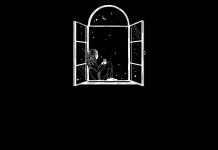Cremation has been part of the death rituals of various cultures since prehistoric times, but with the advent and spread of Christianity, cremation began to be used less and less. Most Christian denominations see it as taboo. Let’s discover why.
Cremation is a process in which the body of a deceased person is burned in specially designed ovens. The burning takes between one and two hours, and the remains are transformed, by grinding, into ashes.
Those who choose to be cremated do so for several reasons, including cultural tradition, the convenience of keeping the urn at home, or turning the ashes into an object that can be worn daily (such as a synthetic diamond) or even the desire to use the ashes to make works of art. This latter practice could potentially lead to the imprisonment of a Swedish artist, Carl Michael von Hausswolff, who might be sentenced to eight years after claiming to have composed a painting using human ash collected from a Nazi concentration camp in Poland.
Cremation: a history
Burning a body, as part of the death ritual, is a practice that dates back to prehistoric times. Evidence that cremation was practiced in ancient times has been found in both Greece and China, but it disappears around 480 BC. In Sweden, the evidence that cremation was a widespread practice disappears in 1050 AD. In Europe, by the 5th century AD, the ritual had been largely abandoned, except in times of war or epidemics.
Some time later, during the French Revolution, Freemasons, revolutionaries, and anarchists chose cremation in order to reduce the role of the church in the funeral procession. Partly because of this, the Catholic Church opposed incineration until the twentieth century.
A similar situation developed in Asia, under Buddhist influence, which allowed cremations until around 1300. The emergence of neo-Confucianism in the 14th century brought burial ceremonies back to culture in most parts of the continent.
Cremation rates vary widely across the world with some countries like Japan, Nepal and Thailand having a rate of over 95% while majority-Catholic countries like Italy, Ireland, and Poland have much lower rates.
Religious perspectives on cremation
Cremation is institutionalized in Asia through Buddhism and Hinduism, being, along with burial, one of the most common forms of dealing with the deceased. Embalming or taxidermy are less commonly used, but can sometimes precede a cremation. In India, cremation takes place outdoors, on wooden rugs that are floated on the Ganges River.
Hinduism
Hinduism is unique among the world’s major religions because it openly endorses cremation, calling it the “last rite” (calledantim-sanskar) or the “last sacrifice” (orantiesthi). It is one of the sixteen rites of life. Hinduism believes that cremation is not only the means by which the body can end this life, but also allows the soul to enter its new life, and reincarnate.
Judaism
On the opposite side are the Abrahamic religions, which do not accept cremation. Although some Reformed or Liberal Jews accept cremation in Israel, the use of crematoria is frowned upon because they are reminiscent of the extermination camps used during the Holocaust.
Islamism
Islamists prefer to bury their dead as soon as possible, even on the day of death, so that the body is not affected in any way. The dead body is taken to the grave by men only, and is wrapped simply in a cloth, without any other clothing or jewellery. When placed in the tomb, the body is put on its side, so that the face can point towards Mecca.
Christianity
The Eastern-Orthodox Church forbids cremation. Its demand for burial is based on respect for the human body, as a work of God, which cannot be subjected to the violence of cremation and the treatment the corpse is put through. In addition, certain implied motives for cremation, such as the rejection of the body of the deceased, the desire to erase the memory of the deceased, or the total destruction of a person, are considered incompatible with the Christian faith.
Since the two main practices, burial and cremation, are linked to different conceptions of mankind and its dignity, cremation also raises a plethora of problems not only of a legal, sanitary, and logistical nature but, also, as far as Orthodox Christians are concerned, of a theological and moral nature. In this belief system, death does not represent total destruction. Through death, the body returns to the dust, that is, to the material element from which it was taken, and the soul is not touched by death. The decomposing body itself is kept for the resurrection on the day of judgment.
The Catholic Church forbade cremation until the twentieth century, but since the decree of the Holy See in July 1963, it is no longer prohibited, provided that this act is not chosen for reasons contrary to Christian doctrine. The denomination continues, however, to privilege the burial of the deceased.
Among Protestant denominations, Calvinists and Lutherans have accepted cremation since 1898, not favouring any means of burial. There are some denominations that do not have an official position on cremation, such as Seventh-day Adventists, Baptists, and Presbyterians.
There is no explicit scriptural command against cremation. Some believers object to the practice of cremation on the basis that it seems to not recognize that one day God will resurrect our bodies and re-unite them with our soul/spirit. But the God who created us is just as capable of re-creating us from the ashes as from the dust He made us from in the first place.



















